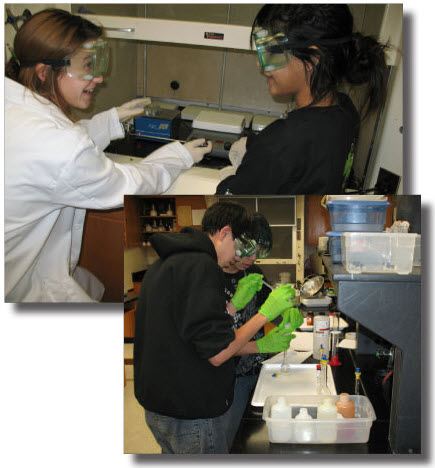Home > Research & Academics > Research Labs > Chemical Analysis & Nanochemistry
Chemical Analysis & Nanochemistry Lab
Director |
Dr. Brian Kennedy |
 |
Founded |
1986 |
|
Description |
Chemical Analysis Research (CAR) integrates many aspects of Chemistry, including Inorganic and Organic Synthesis and Characterization, chemical nanotechnology, utilization of instrumentation such as Fluorescence, Fourier Transform-Infrared Spectroscopy (FT-IR), Raman Spectroscopy, Gas Chromatography, Ultraviolet and Visible Spectroscopy, etc. There are also numerous students involved in the TJ Mentorship Program that are engaged in research at the Naval Research Laboratory, United States Geological Survey, NIH, Walter Reed Army Hospital, and within local colleges and private organizations. If you are interested in competitions such as Intel STS, Siemens, or Science Fair, you should explore and apply for summer research opportunities (such as SEAP, GMU, NIH, etc.). Many past CAR students have been very successful in these competitions so are encouraged and supported to compete in all such opportunities. AP Chemistry must be completed as a prerequisite; the Organic Chemistry elective can be either a perquisite or co-requisite (with Dr. Kennedy’s written permission) in conjunction with Chemical Analysis Research. The combination of Chemical Analysis Research with Organic Chemistry is valuable for students, especially those desiring to pursue collegiate areas in the natural and physical sciences, engineering disciplines, or other related areas such as medicine. Considering the opportunities available within the lab, students are expected to be highly motivated to take the initiative to complete a challenging, unique chemistry-based research project. |
|
Projects |
|
|
Recognitions/ |
|
|
Specialized |
|
|
Sponsors/ |
|
